Archive for the ‘ICE’ Category
Tuesday, September 24th, 2013

The question of whether “N/A” may or must be entered in non-applicable fields, or whether N/A is sometimes required and sometimes optional – is a question we’ve all been wondering about. Here’s recent guidance on the topic . . .
If the passport number and country of issuance fields in Section 1 do not apply, the employee MUST write “N/A.” If all else fails, follow the instructions!…In essence that’s the recent guidance – read the instructions when determining if an N/A response is required as it states when an employer or employee may use N/A or must use N/A. Failing to provide a response in a required field may be considered a verification violattion (yes, it’s true!).
Not to belabor it, but this is another very good reason for providing the instructions to the employees when they are filling out Section 1 and deciding which documents to present in the I-9 process. It would be advisable for the employer representative to also have a copy of the instructions on their desk
The I-9 Instructions: http://www.uscis.gov/files/form/i-9.pdf
How have you been dealing with the “N/A” requirement so far? No judgements – let us hear from you.
Tags: Department Of Homeland Security (DHS), I-9 Audits, I-9 Form N/A requirement, I-9 Training, I-9 Violations, I-9/E-Verify News, I-9/E-Verify News, ICE, Immigration News, Legal Workforce, OSC, SSA, USCIS
Posted in Employer Compliance, I-9/E-Verify News, ICE, Immigration Legislation, Immigration News, OSC, USCIS | Comments Off on Part II — Our Continuing Saga of USCIS Answers Concerning the New I-9 Form
Sunday, September 22nd, 2013
 Answers to questions from April 2013 by the American Immigration Lawyer’s Association (AILA) to USCIS Verification Division/Washington, DC re the new I-9 Form, its Instructions, the M-274 Handbook and the I-9 Central website have finally been answered. We will be featuring several of the Q&A’s this week and trust that you will find this both enlightening and informative.
Answers to questions from April 2013 by the American Immigration Lawyer’s Association (AILA) to USCIS Verification Division/Washington, DC re the new I-9 Form, its Instructions, the M-274 Handbook and the I-9 Central website have finally been answered. We will be featuring several of the Q&A’s this week and trust that you will find this both enlightening and informative.
Today, we deal with new name change directives and guidance – Page 23 of the Employer Handbook. In the case of a divorce, it is recommended even where there is no rehire or reverification in order that the employer’s actions are well documented if the government asks to inspect your Forms I-9.
Question: Can USCIS Verification confirm that the only time an employer is required to record a legal name change is in connection with a rehire or reverificaton? In addition, does USCIS intend, by its advice to take steps to be reasonably assured of the employee’s identity and the veracity of the employee’s claim of a legal name change to require female employees to produce marriage licenses or divorce decrees after a change in marital status? To what extent has Verification discussed this change in guidance with OSC or the EEOC to ensure that it is not inconsistent with anti-discrimination provisions?
Answer: Page 24 of the Employer Handbook contains new guidance for employers dealing with a situation where a current employee comes forward with documentation of a new identity. The Handbook states that the employer should complete a new I-9 form, list the original hire date, and provide a written explanation of the circumstances giving rise to the new I-9-. Although we agree that completion of a new I-9 may be the best practice in certain circumstances, requiring employers to complete a new I-9 for existing employees who provide updated identity documentation appears to be at odds with the statute and regulations that require an I-9 only upon “hire.”
The legal basis for the guidance in the Handbook in certain circumstances is based on the INA that refers to the prohibition against continuing to employ an alien knowing that they are unauthorized to work.
An example of this might be presentation to the employer of a new Social Security Card reflecting a new Social Security number and new name which raises material questions as to the identity of the employee, the veracity of information on Form I-9, the genuineness of any documents presented in Section 2 that contain a Social Security number, and the relation of these documents to the person who presented them. The employer can no longer reasonably rely on the Form I-9 to be assured that the individual is authorized to work. In this scenario, USCIS suggests completion of a new Form I-9 to ensure the employee is eligible to continue in employment. This is a suggestion, and not a requirement.
Our office agrees with this position and recommends filling out a new I-9 form. Should you have any questions concerning this guidance, please contact our office at Info@immigrationcompliancegroup.com or call 562 612.3996.
Tags: I-9 AUDIT, I-9 Document Examination, I-9 Folrm Name Changes, I-9 Form Instructions, I-9 Form Penalties, I-9 Reverification, I-9 Violations, I-9/-Verify News, I-9/E-Verify News, ICE, Immigration News, Legal Workforce, OSC, Social Security, USCIS
Posted in Employer Compliance, I-9/E-Verify News, ICE, Immigration Legislation, OSC, Social Security, USCIS | Comments Off on USCIS Provides Answers to New I-9 Form Questions
Monday, September 9th, 2013
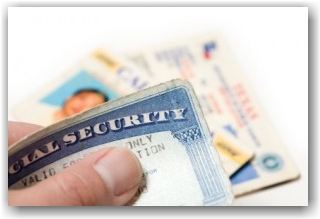
USCIS has gone ‘live’ day with a new TNC communication process. The highlight of the latest enhancement is the combining of the TNC Notice and Referral Letter into one document – the Further Action Notice.
The Further Action Notice simplifies the TNC communication process by combining the employee’s biographical information, the reason for the TNC, the employee’s decision to contest, and employee instructions for contesting a TNC into a single document. There will also be fewer screens to click through.
Here is a chart that provides the action that needs to be taken in various different TNC scenarios — very helpful, as well as a Further Action Notice sample, and a new email notification that will be sent to employees when their cases are referred to SSA or DHS.
Tags: Department Of Homeland Security (DHS), E-Verify Employee Email, E-Verify Further Action Notice, E-Verify TNC Enhancement, I-9, I-9 Compiance, I-9/E-Verify, I-9/E-Verify News, ICE, Immigration News, Legal Workforce, SSA, USCIS
Posted in Department Of Homeland Security (DHS), Employer Compliance, I-9/E-Verify News, ICE, Immigration News, Social Security, USCIS | Comments Off on E-Verify Releases New TNC Enhancements
Thursday, September 5th, 2013
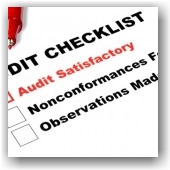
Updated entry re below post: 10/11/2013
In an update to the statements made by ICE to AILA (the American Immigration Lawyer’s Association) in their April 11, 2013 liaison meeting, ICE HSI Worksite Enforcement representatives recently announced to stakeholders that it now has no position on pre-population of Section 1 of the I-9 by electronic I-9 programs, reversing its position from being “not permissible.” This appears to represent an important change from the position the agency announced to AILA and several other organizations in early April that pre-population of Section 1 by electronic I-9 programs is always prohibited.
The AILA Verification and Documentation Liaison Committee will seek clarification of ICE’s recent statements and the impact on employers and electronic I-9 programs at the fall liaison meeting.
::::::::::::::::::::::::::::::
ICE HSI (Homeland Security Investigations) directorate strongly spoke out against I-9 pre-population at a recent AILA (American Immigration Lawyers Association) meeting indicating that it was inappropriate and that pre-populating Form I-9 is considered unacceptable practice and a violation. More recently, OSC in a response to a TAL (Technical Assistance Letter), also spoke out against pre-population stating their concern regarding Section 1 containing outdated or incorrect information.
In light of this change in policy, software providers and employers who use electronic I-9 software should consider this most recent announcement. We caution employers to review their hiring procedures as it relates to this compliance issue with their software providers.
For more information on I-9/E-Verify employer compliance, please refer to our employer resource center.
Tags: Department Of Homeland Security (DHS), HSI, I-9 Prepopulation, I-9 Remote Hires, I-9 Software, I-9 Violations, I-9/E-Verify News, ICE, Immigration News, Legal Workforce, OSC, Technical Assistance Letters, Workforce Compliance
Posted in Department Of Homeland Security (DHS), Employer Compliance, I-9/E-Verify News, ICE, Immigration News | Comments Off on ICE Reverses Position on Pre-Population of Section 1 of I-9 Form
Tuesday, July 2nd, 2013
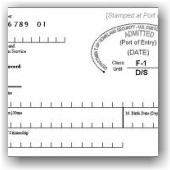
If CBP issued an electronic Form I-94 to one of your employees upon their admission to the United States at an airport or seaport, they should be able to access it from the CBP website at http://cbp.gov/xp/cgov/travel/id_visa/i-94_instructions/.
If they are unable to access their I-94 information from the CBP website, they should call or go to a CBP deferred inspection location to correct the problem. For more information about Deferred Inspection Sites refer to the link. In the alternative, they may file Form I-102 with USCIS and request their Form I-94; however, there is a filing fee and this process may take weeks.
Also remember, that the name as it exactly appears on the passport should be entered into the system. We find that many problems retrieving the I-94 are due to incorrect name entries.
Tags: CBP, Deferred Inspection, Employment Eligibility Verification, FOREIGN TRAVEL, I-9 Form, I-9/E-Verify News, I-94 Arrival-Departure Card, I-94 Automation, I-94 Card, Immigration News
Posted in Employer Compliance, I-9/E-Verify News, ICE, Immigration News | Comments Off on I-94 Card Automation Update
Tuesday, May 7th, 2013
 USCIS Will not Accept Previous Versions of Form I-9 as of May 7, 2013
USCIS Will not Accept Previous Versions of Form I-9 as of May 7, 2013
USCIS reminds employers that beginning today, May 7, 2013, they must use the revised Form I-9, Employment Eligibility Verification (Revision 03/08/13)N for all new hires and reverifications. All employers are required to complete and retain a Form I-9 for each employee hired to work in the United States.
The revision date of the new Form I-9 is printed on the lower left corner of the form. Employers should not complete a new Form I-9 for existing employees, however, if a properly completed Form I-9 is already on file.
A Spanish version of Form I-9 (revision 03/08/13)N is available on the USCIS website for use in Puerto Rico only. Spanish-speaking employers and employees in the 50 states, Washington, D.C., and other U.S. territories may use the Spanish version for reference, but must complete and retain the English version of the form.
The revised forms are available online at www.uscis.gov/I-9. USCIS has also offering free webinars to help employers learn about the new form. To order forms, call USCIS toll-free at 1-800-870-3676. For free downloadable forms and information on USCIS programs, immigration laws, regulations, and procedures, please visit www.uscis.gov and go to the ‘forms’ menu or I-9 Central
Tags: Employment Eligibility Verification, I-9/E-Verify News, I-9/E-Verify News, ICE, Immigration Compliance Group, Immigration News, Immigration Reform, Legal Workforce, M-274 Employer Handbook, New I-9 Form, Social Security
Posted in Employer Compliance, I-9/E-Verify News, ICE, Immigration Legislation, Immigration News, Social Security | Comments Off on Employers Must Use Revised Form I-9, Employment Eligibility Verification Form
Thursday, March 14th, 2013
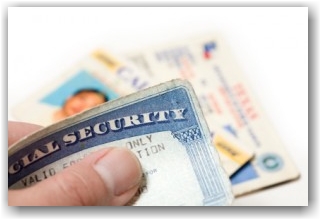
A new edition of the I-9 employment eligibility verification form was introduced last week. USCIS has been working on the revised I-9 form for more than a year. The revised M-274 Handbook for Employers can be accessed at the same link. Many areas on the I-9 Central website have also been updated. Note the webinar schedule for the new form.
The new edition of the I-9 Form, dated March 8, 2013, will take effect immediately on publication and will become the only acceptable version of the form. Employers who need to make necessary updates to their business processes to allow for use of the new Form I-9 may continue to use other previously accepted revisions (Rev.02/02/09)N and (Rev. 08/07/09)Y until May 6, 2013. Effective May 7, 2013, all employers must use the revised Form I-9 for each new employee hired in the United States. Employers who are not using the I-9 form following the 60-day grace period will be subject to fines and penalties under 274(a) of The Act (The Immigration and Nationality Act), IRCA, as well as ICE.
The revised Form I-9 has several new features, including new fields and a new format to reduce errors, and more clearly describes the information employees and employers must provide in each section. The instructions to the form are now 7 pages in length, and we recommend that you provide the instructions and the list of documents to your new employees to refer to during the process. The form looks much more official and now displays the DHS seal at the top left of the form with space built in to eventually implement future barcode technology. Helpful new images have been added to the M-274 Handbook to illustrate how employees and employers can complete Sections 1-3 of the new form. Please also see page 23 for updated guidance on recording changes of name and other identity guidance.
In the USCIS Stakeholder conference held on March 11, 2013, many of the questions centered around the following topics that we thought might be helpful to share with you, as follows:
- Do I need to fill out a new I-9 forms for all employees? You do not need to do new I-9 forms for those employees who already have one.
- When to accept receipts: Receipts for initial employment or renewal (during reverification) of employment are not acceptable. There are 3 different documents that qualify as receipts are: (a) Receipts may be presented for sections 2 and 3 if the document was lost, stolen or damaged; the receipt is valid for 90 days. (b) Temporary I-551 (a printable notation on a machine-readable immigrant visa inside a foreign passport). This is a 1-year permanent residency stamp for a foreign national that has received permanent status abroad. The Form I-551 (permanent residency card) must be presented prior to or no later than the expiration stamp inside the passport. (c) An I-94 entry card with an unexpired refugee stamp. This is considered a receipt for an Employment Authorization Document (EAD card), or a combination of an unrestricted Social Security Card and a List B document and is valid for 90 days.
- Rehires and Reverifications: If you are rehiring an employee who completed an I-9 form within 3 years, you can continue to use the existing I-9 form, and record any name changes, the rehire date and other required information in Section 3 and change the date of hire in Section 2 (initial/date). If their work authorization as changed you can make the correction on the existing form if still valid or generate a new form I-9 and fill in Section 3 and attach to the old form. As a reminder, do not reverify US citizens, permanent residents, conditional residents, asylees with unrestricted work authorization and List B identity documents such as driver’s licenses and state ID cards.
- The use of notaries: Notaries are “designated agents” of the employer. They should not imprint their notary stamp on any I-9 documentation or attach same to the I-9 form. The employer is responsible for their actions and any violations relating to Form I-9. Photocopies of I-9 forms are also not acceptable from Notaries. A notary or any other designated agent appointed by the employer must examine the original documents presented to them and thoroughly complete and sign section 2 of the form and return the original to the employer, along with photocopies of the presented documents should this be a company policy.
- Recording social security numbers: On the List of Acceptable Documents for List C, Social Security card restrictions are explained to better assist in examination of the document. Note that individuals with temporary work authorization are issued restricted social security cards that indicate: “Not valid without USCIS/DHS work authorization
- Recording the date of hire in Section 2: When an offer of employment is extended and accepted but the employee has not yet started, the I-9 may be completed using that date instead of the ‘actual’ start date of employment. You may then go back into the form and adjust the date to the actual start date (the 1st day of work for pay). Recruiters or recruiters for a fee are not required to enter the employee’s first day of employment. However, you may enter the first day the employee was placed in a job pool after an offer of employment and acceptance.
- Must employee present documents that correspond to box checked in Section 1? No, employers may not insist on viewing any particular documents. However, if information is recorded in section 1 that puts the employer “on notice” that work authorization may be expiring, you are required to track that date and follow-up with the employee concerning their continued work authorization.
USCIS has indicated that a good place to begin implementing the use of the new I-9 form is to take time to first thoroughly read and digest the revised M-274 Handbook for Employers. Download it from the USCIS website and provide a complete copy to each and every employee charged with processing and managing the I-9 function at your place of employment to ensure that they are aware of the changes and are equipped to properly implement them. Update your company policies to reflect the changes in the form.
For those of you who manage your I-9 forms via an electronic software vendor, this is absolutely the right time to have a conversation with them concerning their compliance with the new form and make sure that it complies with all pertinent rules and regulations for I-9 electronic software . This is also an excellent time to think about additional training for your staff. Refer here for our services and solutions.
To order copies of the new I-9 form from USCIS, you can call 1-800-870-3676.
Tags: Changes to new I-9 Form, Department Of Homeland Security (DHS), Department Of Labor (DOL), Employer Sanctions, Employment Eligibility Verification, Handbook for Employers, I-9 AUDIT, I-9 Form Penalties, I-9 Training, I-9/E-Verify News, ICE, Immigration News, Legal Workforce, M-274, New I-9 Form, Social Security, USCIS
Posted in Department Of Homeland Security (DHS), Department Of Labor (DOL), Employer Compliance, I-9/E-Verify News, ICE, Immigration Legislation, Immigration News, Social Security, Staffing Agencies, USCIS | Comments Off on New I-9 Form Update from Immigration Compliance Group
Thursday, March 7th, 2013
 A new edition of the I-9 employment eligibility verification form has been introduced today and has been published in the Federal Register as of this writing. USCIS has been working on the revised I-9 form for more than a year. In March 2012, it published a proposed revision for public comment.
A new edition of the I-9 employment eligibility verification form has been introduced today and has been published in the Federal Register as of this writing. USCIS has been working on the revised I-9 form for more than a year. In March 2012, it published a proposed revision for public comment.
The new edition, dated March 8, 2013, will take effect immediately on publication and will become the only acceptable version of the form. Employers who need to make necessary updates to their business processes to allow for use of the new Form I-9 may continue to use other previously accepted revisions (Rev.02/02/09)N and (Rev. 08/07/09)Y until May 7, 2013. After May 7, 2013, all employers must use the revised Form I-9 for each new employee hired in the United States. Employers who are not using the I-9 form following the 60-day grace period will be subject to fines and penalties under 274(a) of The Act (The Immigration and Nationality Act), IRCA, as well as ICE.
The revised Form I-9 has several new features, including new fields and a new format to reduce errors. The instructions to the form also more clearly describe the information employees and employers must provide in each section. To order copies of the new I-9 form from USCIS, you can call 1-800-870-3676.
For those of you who manage your I-9 forms via an electronic software vendor, this is absolutely the right time to have a conversation with them concerning their compliance with the new form. This is also a good time to think about additional training for your staff. Refer here for our services and solutions. We will be reviewing the form very carefully in the next few days and will post our comments and guidance.
Tags: Employment Eligibility Verification, I-9 Form, I-9/E-Verify News, ICE, Immigration News, Immigration Reform, New I-9 Form, Social Security, USCIS
Posted in I-9/E-Verify News, ICE, Immigration Legislation, Immigration News, Social Security, USCIS | Comments Off on NewsFLASH —— New I-9 Form Released March 8, 2013
Thursday, February 28th, 2013
The SSA Program Policy Information Site contains the public version of the Program Operations Manual (POMS). The POMS is a primary source of information used by Social Security employees to process claims for Social Security Benefits.
Today, SSA issued updates on several topics of interest to our readers and clients concerning I-9, EAD and SSA document examination and interpretation, as follows:
1) EAD’s for NIVs: https://secure.ssa.gov/poms.nsf/lnx/0110211420
2) How to Verify Asylee Status: https://secure.ssa.gov/poms.nsf/lnx/0110211213
3) Evidence of Asylee Status When Form I-94 (Arrival and Departure Record) is Submitted: https://secure.ssa.gov/poms.nsf/lnx/0110211207
4) Evidence of Asylee Status for an SSN Card: https://secure.ssa.gov/poms.nsf/lnx/0110211205
You will find this a wealth of excellent information and a great resource. Should you have any questions or comments, please feel free to contact our office.
Tags: Asylee I-9 Verification, EAD Card, EADs for Nonimmigrants, Employment Authorization, I-9 Document Interpretation, I-9 Form, I-9/E-Verify News, Immigration News, Social Security Administration POMS, SSA I-9 Guidance; I-9 Document Examination, USCIS
Posted in Employer Compliance, I-9/E-Verify News, ICE, Immigration News, Social Security, USCIS | Comments Off on I-9/E-Verify News: Recent Social Security Administration Guidance and Updates
Thursday, February 28th, 2013
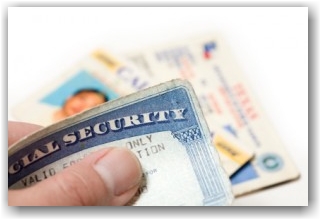
House Judiciary Committee holds Hearing Feb 27, 2013 on E-Verify to determine how it works and how it benefits American employers and workers
Areas of discussion were:
- Penalties for using E-Verify as a Pre-Screening Tool: Doing so is abuse of the system and totally prohibited, although at this time there are no penalties for pre-screening candidates prior to the acceptance of a job offer. The Monitoring and Compliance Unit of USCIS has indicated that they do indeed investigate employer usage particularly when there are patterns of abuse, and can be referred to OSC.
- The panel discussed that Mandatory E-Verify as part of a CIR bill should not require employers to verify their entire workforce – but just their existing employees.
- Identity Fraud: the Social Security Administration is working on a fix to identity fraud whereby one will be able to lock in their SS# to prevent multiple usage of numbers. SSA anticipates that this feature will be ready to roll out by the end of the year. As it stands now, a prospective employee can present fraudulent documents for the entire I-9 process for all 3 lists and be ‘work authorized’.
Further discussion ensured regarding the “phase in” process and whether or not the national usage mandate should become effective with the existing system while changes are implemented or wait until the system is further perfected. Additional discussion took place around establishing an official procedure for those workers who have been terminated due to incorrect Final Non-Confirmation (FNC) notices so that they can rectify the incorrect data.
The following is a statement by Rep. Gutierrez:
“Today’s hearing is remarkable because we are talking about employment verification systems in their proper context. We are discussing how to actually make them work and work for American workers with the right sorts of protections and appeals processes that make sure any errors are corrected in a timely manner. And we are talking about electronic verification systems as part of a broader reform that legalizes the current workforce and allows for legal immigration in the future.”
There’s certainly more to track as discussions ensue, and we will keep you posted on this topic.
Tags: Comprehensive Immigration Reform, E-Verify, E-Verify Final Non-Confirmation, House Judiciary Committee Hearing on E-Verify, Identity Fraud, Immigration Reform, Mandatory E-Verify, Rep. Gutierrez, Social Security Card, SSA, USCIS
Posted in Congress, Employer Compliance, Federal Contractors, I-9/E-Verify News, ICE, Immigration Legislation, Immigration News, OSC | Comments Off on How does E-Verify Fit into Comprehensive Immigration Reform?









